School of Media & Design
Bachelor of Arts in Visual Arts in Visual Communication Design
Qualification / Course Information
Minimum Duration:
3 Years
Minimum Credits:
370
NQF Level:
7
SAQA:
117879
MODE:
Contact Learning
CAMPUS:
Durbanville (Cape Town)
LANGUAGE:
English
QUALIFICATION OVERVIEW
This STADIO qualification will be your entry into the world of graphic design and photography, by teaching you highly specialised skills to excel in a wide range of commercial areas in both print and digital media. You will use industry standard software, including Adobe InDesign, Illustrator and Photoshop, to emphasise innovative and design processes that define visual communication.
The art and science of photography will allow you to transform images into a profound creative design that will set your portfolio of creative work apart from other graduates and will assist you to step into the career field as an Art Director or Creative Director.
Entry Requirements
THE ADMISSION CRITERIA FOR THE BACHELOR OF ARTS IN VISUAL ARTS IN VISUAL COMMUNICATION DESIGN ARE:
-
a Senior Certificate (SC) with degree endorsement; OR
-
a National Senior Certificate (NSC) with a minimum of 50% in four 20-credit subjects and a minimum of 30% in English Home Language or First Additional Language; OR
-
a National Senior Certificate – Vocational Level 4 (NC(V)) with a minimum of 60% in three fundamental subjects including English; and minimum 70% in four vocational subjects; OR
-
the STADIO Higher Certificate (NQF 5); OR
-
a Cognate Higher Certificate (NQF 5) or Advanced Diploma (NQF 6) or Diploma (NQF 6).
In addition, applicants are required to submit a portfolio of evidence.
PORTFOLIO REQUIREMENTS
-
An essay of 500 words explaining how you feel the world is going to be when robots walk among us.
-
A portfolio of artistic creations in the visual communication domain (design and photography).
A motivation letter outlining your reasons for applying to the STADIO BA in Visual Arts in Visual Communication programme. Clearly stating your goals for yourself is crucial when working on a self-directed creative project. Please briefly describe your goals for your studies and artistic endeavors, as well as the talents you hope to hone.
STATIONERY REQUIREMENTS
A breakdown of the stationery requirements can be downloaded HERE
OTHER ACCESS PATHWAYS:
-
STADIO Higher Certificate in Photography (NQF 5); or
-
A cognate Higher Certificate on NQF 5 OR Advanced Certificate on NQF 6 or Diploma on NQF 6.
To find out more about alternate access routes at STADIO, please click HERE
QUALIFICATION OUTCOMES
-
Demonstrate an integrated knowledge of the key areas and practices of visual communication design, including an Demonstrate understanding of and the ability to apply and evaluate the key terms, concepts, facts, principles, rules and theories, and how it relates to other disciplines such as business marketing.
-
Demonstrate an understanding of knowledge as contested, and the ability to evaluate types of knowledge, principles and concepts common to the study of visual communication design.
-
Demonstrate an understanding of a range of methods of enquiry in a field, discipline or practice, and their suitability to specific investigations; and the ability to select and apply a range of methods to resolve problems or introduce change within the field of visual communication design.
-
Ability to identify, analyse, evaluate, critically reflect on and address complex problems, applying evidence-based solutions and theory-driven arguments in visual communication design.
-
Ability to make decisions and act ethically and professionally, and the ability to justify those decisions and actions drawing on appropriate ethical values and approaches within a visual communication design environment.
-
Ability to develop appropriate processes of information gathering for a given context or use; and the ability to independently validate the sources of information and evaluate and manage the information.
-
Ability to develop and communicate ideas and opinions in well-formed arguments, using appropriate terminology in visual communication design and related fields.
-
Ability to manage processes in unfamiliar and variable contexts, recognising that problem solving is context and system bound, and does not occur in isolation.
-
Ability to identify, evaluate and address his or her learning needs in a self-directed manner, and to facilitate collaborative learning processes.
-
Ability to take full responsibility for his or her work, decision-making and use of resources, and show limited accountability for the decisions and actions of others in varied visual communication design contexts.
QUALIFICATION CURRICULUM
1st YEAR MODULES
-
Contextual Info Design 1
-
End User Computing
-
Fundamentals of Image Enhancement
-
Photography in Practice 1
-
VisCom Design Business 1
-
Visual Imaging Studies 1
2nd YEAR MODULES
-
Contextual Info Design 2
-
Graphic Design & Typography 1
-
Photography in Practice 2
-
VisCom Design Business 2
-
Visual Imaging Studies 2
3rd YEAR MODULES
-
Creative Art Direction in Context
-
Contextual Info Design 3
-
Graphic Design & Typography 2
-
Research Methodology
-
Visual Imaging Studies 3
-
Work-Integrated Learning
CAREER OPPORTUNITIES
Below are some key career opportunities that you may consider once you have completed this qualification:
-
Illustrator
-
Art / Creative Director
-
Layout Artist
-
Production Artist
-
Advertising Designer
-
Typography Designer
-
Graphic Artist / Designer
-
Commercial / Advertising Photographer
-
UX / UI Designer (APP, Websites)
-
Portrait, Editorial and Fashion Photographer
